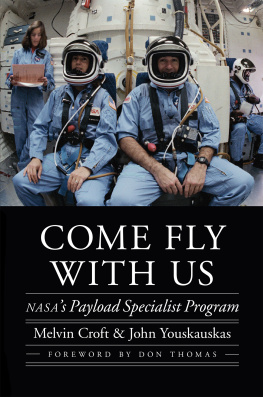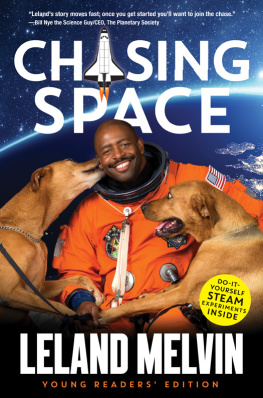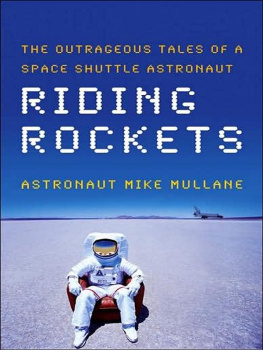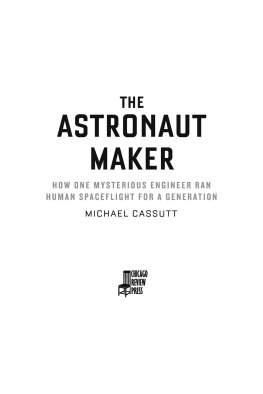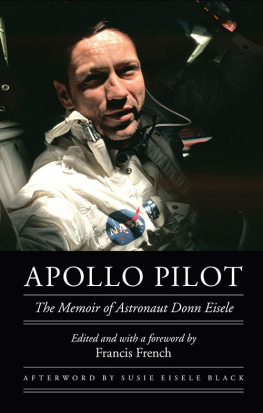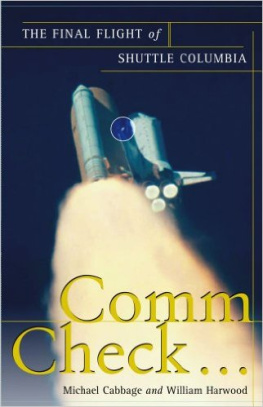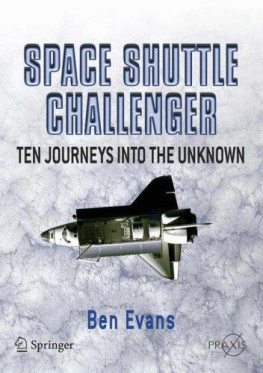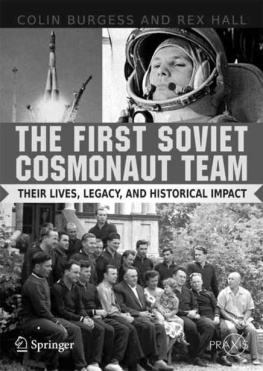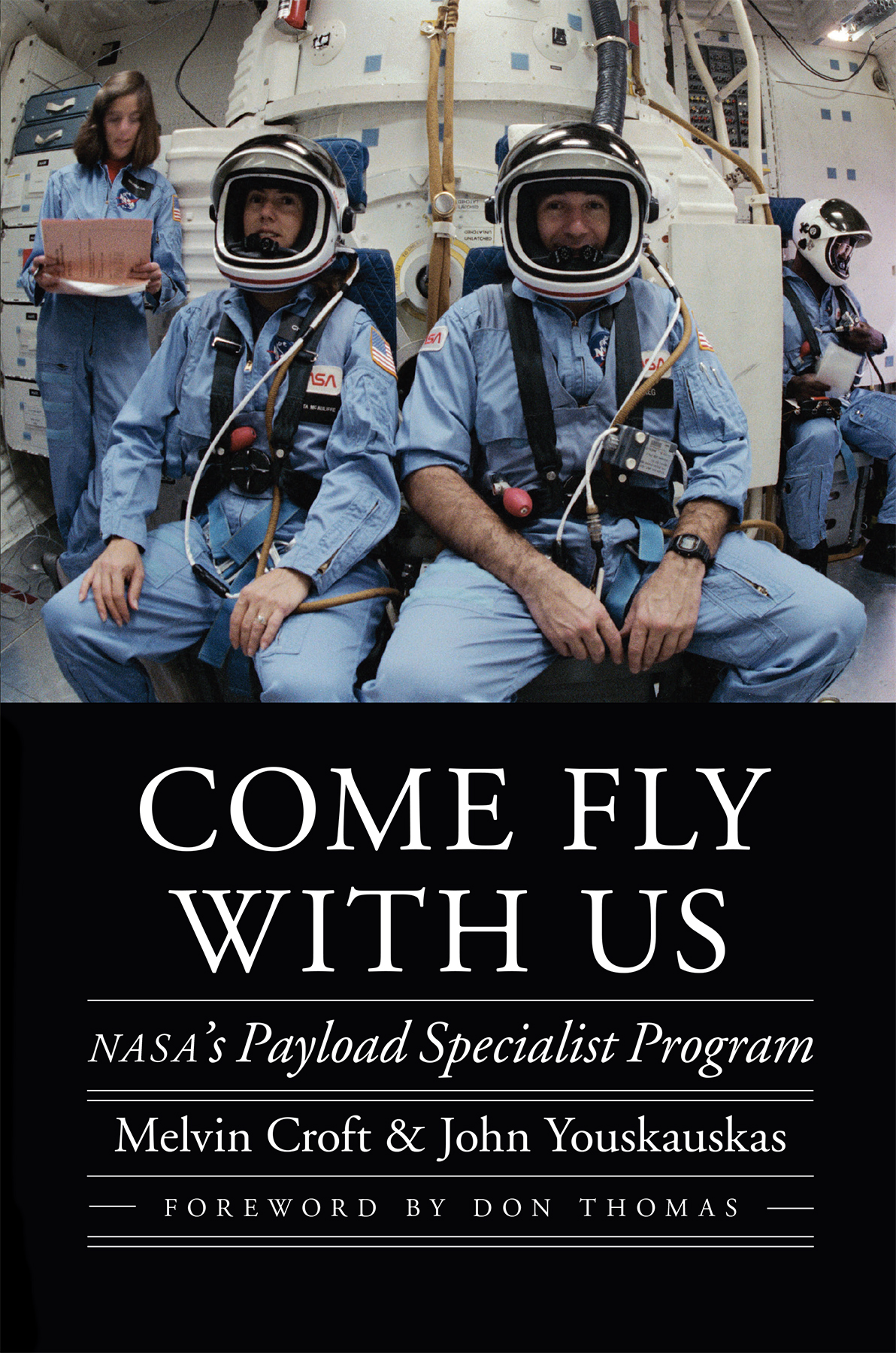
Im surprised that nobody has written a book about the payload specialist program before now. This program sponsored some outstanding on-orbit scientific research that was conducted by a truly diverse and dedicated group of extraordinary people. This is a great story of the shuttle era, extremely well researched and told.
Col. Jerry L. Ross, USAF (Ret.), NASA astronaut and author of Spacewalker
No history of the space shuttle program could ever be considered complete without exploring the many accomplishments of the payload specialists. This consistently fascinating book is packed from start to finish with previously untold and sometimes controversial stories that delve into an intriguing aspect of life and work aboard Americas space shuttles. The authors have done a magnificent job.
Rick Houston, space historian and coauthor of Go, Flight!: The Unsung Heroes of Mission Control, 19651992
Before being selected as a payload specialist, I had already worked with NASA s astronauts, instructing them on ways to interpret different oceanographic features and patterns from orbit. I then flew my own journey of discovery with the crew of STS -41 G . This wonderful book brought back so many memories of an amazing time, the beauty of our planet as seen from orbit, and some truly unforgettable people.
Paul D. Scully-Power, payload specialist, STS -41 G
Outward Odyssey
A Peoples History of Spaceflight
Series editor
Colin Burgess
Come Fly with Us
NASAs Payload Specialist Program
Melvin Croft and John Youskauskas
Foreword by Don Thomas
University of Nebraska Press | Lincoln & London
2019 by the Board of Regents of the University of Nebraska.
Cover designed by University of Nebraska Press; cover image courtesy of NASA .
All rights reserved
Library of Congress Cataloging-in-Publication Data
Names: Croft, Melvin, author. | Youskauskas, John, author.
Title: Come fly with us: NASA s Payload Specialist Program / Melvin Croft and John Youskauskas; foreword by Don Thomas.
Description: Lincoln: University of Nebraska Press, [2019] | Series: Outward odyssey: a peoples history of spaceflight | Includes bibliographical references and index.
Identifiers: LCCN 2018003953
ISBN 9780803278929 (cloth: alk. paper)
ISBN 9781496212245 (epub)
ISBN 9781496212252 (mobi)
ISBN 9781496212269 (pdf)
Subjects: LCSH : United States. National Aeronautics and Space Administration. Payload Specialist ProgramHistory. | Payloads (Aerospace engineering)United StatesHistory.
Classification: LCC TL 521.312 . C 76 2019 | DDC 629.4500973dc23
LC record available at https://lccn.loc.gov/2018003953
The publisher does not have any control over and does not assume any responsibility for author or third-party websites or their content.
Dedicated to the unsung heroes of NASA s payload specialist program, who dared to dream of flying in space, then turned that dream into reality. This is your story.
Contents
Along with the lunar module that landed astronauts on the moon during the Apollo program, the space shuttle is arguably one of the most iconic flying machines of the twentieth century. Besides launching satellites into Earth orbit and others to distant planets, the space shuttles also brought astronauts and supplies to the Russian Mir space station and were a major workhorse for the delivery of components and construction of todays International Space Station. The space shuttle carried the Hubble Space Telescope to space, where five servicing missions took place to repair the Hubble and upgrade its many sensors and cameras. Far eclipsing the science returns of the Skylab space station, the space shuttle was all about science with twenty-seven Spacelab missions, twenty-two Spacehab missions, and many others dedicated to astronomy, the microgravity and life sciences, and studying Earth. In fact, there probably wasnt a single space shuttle that launched from the Kennedy Space Center that didnt have middeck lockers filled with additional science experiments from researchers across the United States and around the world.
Besides the wealth of scientific data returned to Earth, the space shuttle was instrumental in opening up space to a large and diverse group of individuals. While a few science astronauts were selected during the Apollo program with one of them (Jack Schmitt) walking on the moon, not until the shuttle era did NASA begin selecting large numbers of mission specialist astronauts to support the science objectives. Both men and women were recruited from a wide range of backgrounds. Medical doctors, scientists, engineers, astronomers, geologists, and later in the program, even school teachers were selected to fly as mission specialists.
Beginning with the launch of the first Spacelab mission during STS -9 in 1983, NASA started flying a whole new category of noncareer astronauts called payload specialists aboard the space shuttle. Initially, as documented by the authors of this book, payload specialists were professional scientists with unique skills and backgrounds that helped maximize the scientific return from the missions, but soon NASA opened it up to fly engineers from some of its industry partners, with Charlie Walker representing McDonnell Douglas Corporation, Robert Cenker from RCA , and Greg Jarvis from Hughes Aircraft.
International participants were also invited to fly as payload specialists with Ulf Merbold from Germany, Marc Garneau from Canada, Patrick Baudry from France, Prince Sultan Salman Abdulaziz Al-Saud from Saudi Arabia, Rodolfo Neri Vela from Mexico, Mamoru Mohri from Japan, and Ilan Ramon from Israel just a few of the many international participants. The military also selected payload specialists to support some of their Department of Defense space shuttle missions, including Gary Payton and William Pailes from the air force and Thomas Hennen from the army. Even politicians were invited to fly as payload specialists, such as Bill Nelson from the House of Representatives and Jake Garn from the Senate. Teachers were invited to join the ranks, with Christa McAuliffe being the first to launch aboard Challenger. And John Glenn was able to return to space as a payload specialist aboard space shuttle Discovery in 1998. While proposals made to fly celebritiessuch as journalists, artists, poets, singers, and actorsand even regular citizens into space were never realized, the breadth of experience and diversity in backgrounds of the payload specialists who flew on the space shuttle is truly amazing.
Although this book mostly covers the early years of that particular program, I had the great pleasure to fly with three payload specialists on three of my four flights and worked and socialized with many more of them at the NASA Johnson Space Center during my seventeen-year career as an astronaut. Sharing my very first mission with Chiaki Mukai, the first woman from Japan to fly in space, made the experience even more special by providing me with the opportunity to visit her country and learn about her customs and traditions. Ill never forget the amazing experience I had eating fugu in a small restaurant in Hiroshima along with fellow crew member Leroy Chiao and our backup payload specialist Jean-Jacques Favier or sampling eel gall bladder soup at a local restaurant in Tokyo!
Orbiting Earth 692 times during my four missions, I was able to see much of our planet from above, and the experience forever changed my perspective of where I fit in on Planet Earth. Being born in Cleveland, Ohio, I grew up identifying primarily as a Clevelander. But after my trips to space, today I identify myself more as an Earthling, just one of over 7 billion fellow passengers traveling through the cosmos on Spaceship Earth. Flying with Chiaki on STS -65 helped broaden my cultural experience, so I not only saw other countries down below but was able to experience some of their cultures as well, just one of the great benefits that the payload specialist program brought to the rest of the Astronaut Office. It was truly an enriching experience!
Next page
